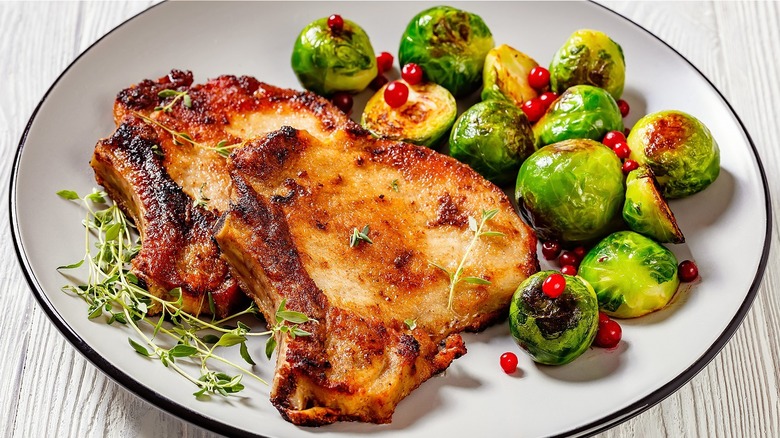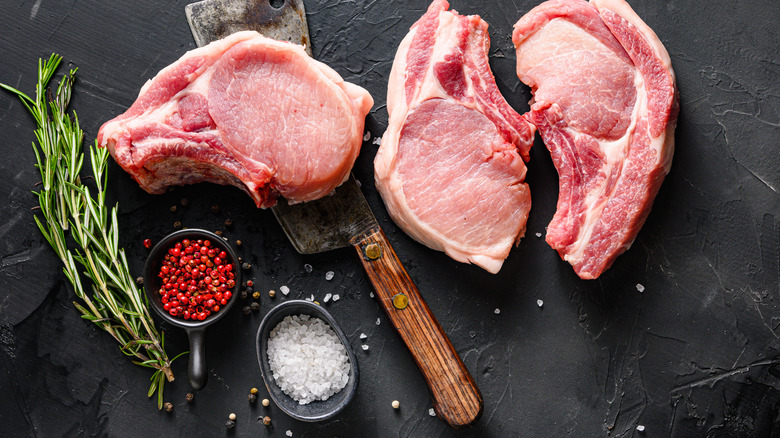The Case For Dry Brining Pork Chops (& How To Pull It Off)
If you've ever eaten a Thanksgiving turkey that was brined beforehand, you know the magical difference a little salt water can make. It seems like alchemy, but it's just a natural consequence of chemical processes: Letting something sit in salty water transforms meat's protein structure and incorporates moisture into the cells, making for juicy, tender cuts of whatever you're cooking. Any additional seasonings you add boost taste at the molecular level.
But, if you've ever brined a turkey yourself, you know it's not a pretty process. Submerging raw poultry in large quantities of liquid can get sloppy quickly. Smaller birds are easier to manage, but soaking things in salt water is still a bit involved.
That's what makes dry brining an ideal solution. You get the benefits of brining, without the slippery kitchen and weird juices running down your countertop. Solid results without the liquid mess: It's a win-win. The salt draws out liquid from the meat, so it's brining in its own juices, which provide intense flavor. The process is as simple as it comes: Dry brining is really just another way of saying that you salt your food and let it sit before cooking.
It's an approach that works with any kind of meat but provides especially rewarding results when it comes to pork chops, resulting in some of the tastiest, juiciest pork chops you've ever tried.
How to dry brine your pork chops
Samin Nosrat told TODAY that she is a big fan of dry brining ("pre-salting") pork chops. Nosrat recommends adding salt and any other herbs or spices anywhere from 20 minutes to a couple of hours in advance. But the flavors get deeper with time, so many cooks prefer to leave them overnight or longer, up to 24 hours.
About ½ tablespoon for every thick-cut pork chop is about the right amount, with lesser quantities of herbs: About ½ teaspoon or so of pepper and whatever herbs you choose for every chop should do the trick. You rub the salt mix on both sides of the chops and place them on a rack on top of a baking sheet. Leave them to sit in the fridge until you're ready to cook. You don't need to wipe the salt off before frying or grilling the chops, but it's best if you add a little oil directly to the chops or the pan.
While brining alone makes a world of difference in terms of both flavor and texture, Nosrat suggests that you can get more out of your meat by choosing the right kind of chop. The best-tasting kind is thick cut and bone-in, featuring marbled fat and looking pink and fresh in the package. But, even if your pork chops are sub-par, brining will make them better.
Once you've tried a dry-brine, you'll never look back. So much extra flavor and so little extra time.

